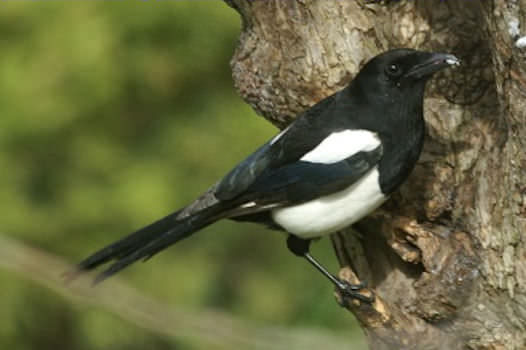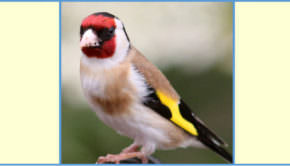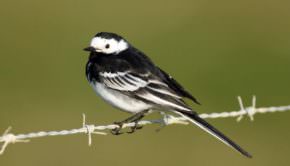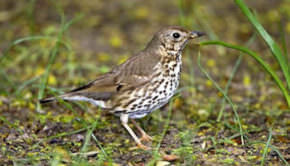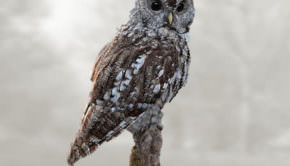Bird of the Month: The Magpie
At first the magpie looks like a black and white crow with a long tail which is over half the bird’s total length. Close to, however, the black wings and tail take on an iridescent hue of blues, greens and purples. They are sedentary holding a territory of about 12 acres all year round and rarely moving far from their birth place. They mate for life and in Spring, over a period of several weeks, both birds build a large nest high up in tall trees. These sometimes have 2 entrances as well as a domed roof to prevent predation by other crows. The female lays approximately 6 eggs which she alone incubates while the male feeds her. After 18 – 19 days the eggs hatch and both birds then feed the young who fledge after 26 – 30 days. The young are fed for another 4 weeks and stay in the parents’ territory until September or October when they form loose flocks, feeding and roosting together. In areas where nesting sites are limited between 25% to 60% of birds do not breed at all. Magpies are scavengers, predators and pest destroyers feeding on insects, rodents, carrion, eggs, nestlings, grain, berries and fruit. They have a reputation for stealing shiny objects but when Exeter University scientists conducted an experiment they found that magpies were rather nervous of unfamiliar shiny and dull objects indicating they suffered from neophobia which is a fear of new things. If they manage to survive their first year, and many do not, their average life expectancy is 3 years although the oldest recorded was over 21 years.
Did You Know?
- The length of a magpie’s tail is an indication of the bird’s status in its society.
- In the spring, large numbers of magpies often gather to resolve territorial conflicts and social standing. These gatherings, called parliaments.
- Until the mid-19th century, magpies were popular with farmers as they ate harmful insects and rodents but heavy persecution by gamekeepers up to WW1 caused their numbers to plummet. However, from 1970 to 1990 their numbers trebled and now seem stable which may be the result of the all year round supply of carrion from road kill.
- Magpies are highly intelligent and are able to solve puzzles, mimic human speech and recognise themselves in mirrors.

